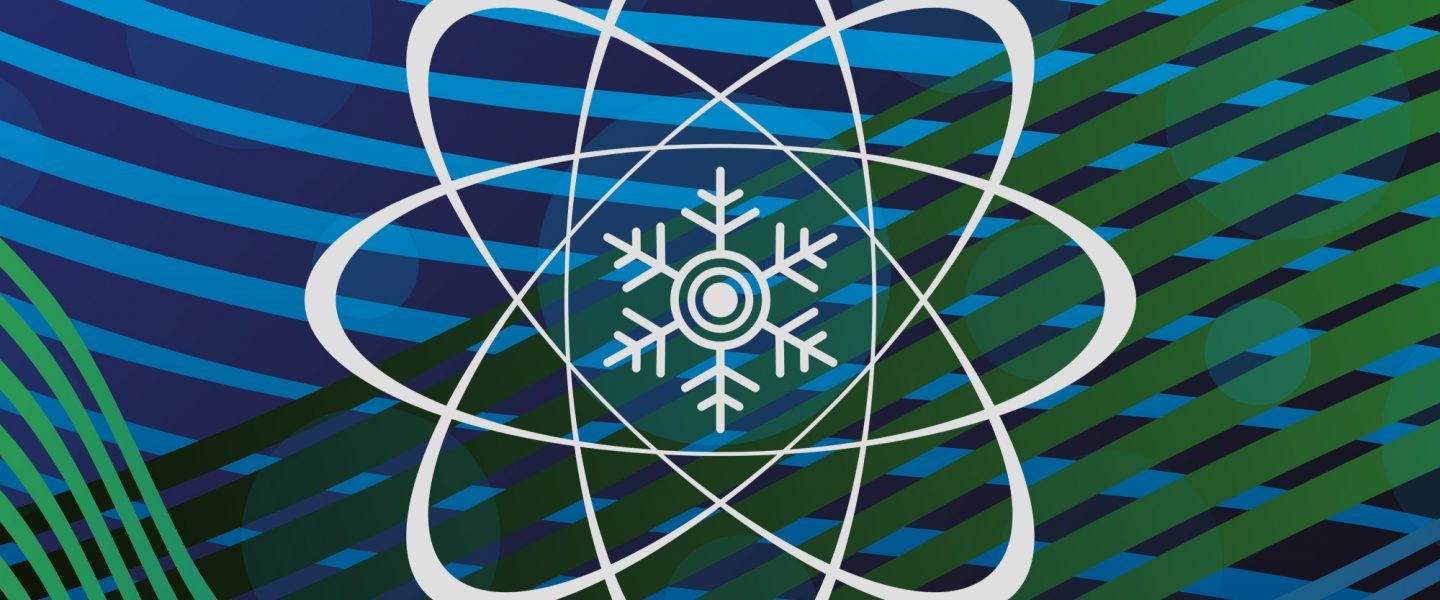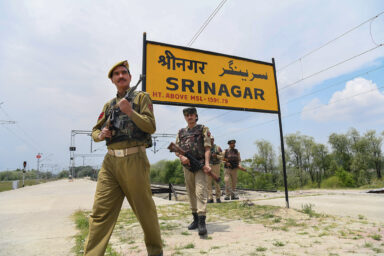Does a mix of justified concerns and unwholesome paranoias stand in the way of a planet-saving advance?
|
Listen To This Story
|
This is the third and concluding part of my series exploring the potential of cold fusion, sometimes referred to as Low-Energy Nuclear Reactions (LENR), as an alternative source of energy — and the barricades that appear to have been set along the road to its realization.
In Part I, I introduced the fact that energy locked in the nucleus of the atom is a million times greater than energy in the electrons. The vast energy of the atom bomb (based on fission) has been tamed in nuclear power plants, but at great risk and cost in terms of meltdown dangers, environmental destruction, and nuclear waste.
Fusion has promised the same huge energy potential with the additional advantages of cheap fuel (heavy hydrogen is much cheaper than uranium) and far less nuclear hazard.
The problem is that no one knew how to get a fusion reaction going without heating the hydrogen hotter than the center of the sun. Daunting.
In Part II, I described the unexpected experimental result in which nuclear fusion has been observed in a tabletop device that is no more complicated than a glorified battery. This was first announced by two University of Utah professors in 1989; but, instead of being hailed as heralds of a new prosperity based on clean and abundant energy, the two were demonized by physicists who had hundreds of millions of dollars in grants for research in hot fusion.
Not incidentally, cold fusion is a threat to the fossil fuel industry and to banks whose stock in trade is “petrodollars.”
Research in cold fusion has been a backwater for 34 years, censored in the literature of mainstream science; but progress has continued nevertheless.
Recipe for a Cold Fusion Cell
Palladium is a precious metal with the unusual property that it is porous to hydrogen. Adding some electricity to your chemical reaction, you can induce a full load of hydrogen to enter the palladium, but it can take weeks for the hydrogen to move in even one millimeter from the surface, and details of shape and composition of the water solution are crucial. Even the provenance of the palladium seems to be important, though different batches are sold as “pure.”
Fusion is a lot easier with heavy hydrogen than with normal hydrogen. Two nuclei of heavy hydrogen can make one helium nucleus in a single step. (Heavy hydrogen behaves chemically the same as normal hydrogen because chemistry depends on the electrons on the outside, not the nucleus on the inside.)
Although heavy hydrogen is fairly rare in nature (about one atom in 13,000), water with heavy hydrogen, called heavy water, is not too hard to make. Heavy water costs about $1,000 per liter, and one liter of heavy water could fuel enough fusion energy to power a small city for a month, if we had a power plant based on either hot fusion or cold fusion.
So the cost of heavy hydrogen is not a barrier to practical fusion energy. Palladium, which is far and away the most reliable substrate for cold fusion cells, could be a cost issue, in spite of the fact that it is a catalyst and not actually consumed in the cold fusion process. In fact, if every household in the world wanted to power their home with cold fusion, there would not be enough palladium. There has, however, been research using nickel or titanium instead of palladium — not as good, but much cheaper and more abundant, and perhaps it can be made to work.
The big issue is the uncertain wait time before the palladium fills with hydrogen. Nobody knows what makes cold fusion start to happen, or when it will occur. Much of the reason for the variability in reports from one lab to the next derives from this erratic behavior, which we still don’t understand. The one thing everyone agrees on is that it requires a full load of heavy hydrogen, one atom for each palladium atom, and that achieving this level of penetration is tricky.
My Personal Experience
In the fall of 2011, I read an article in Wired (since deleted, but available at the Internet Archive) about an Italian businessman who was taking orders for cold fusion (CF) generators. Reportedly, the US Army had deposited $1 million. It described an apparently successful demonstration:
The E-Cat is deceptively simple: [Heavy] hydrogen is passed over a special catalyst based on nickel in a container about a liter in size, and enough heat is produced to boil water. A demonstration in January appeared to show several kilowatts of output from a four hundred watt input.
Since 1989, I had not given a thought to cold fusion. How could it be that someone, even a mountebank, was selling a working device while the entire scientific community had dismissed cold fusion as a mistake?
I began reading and researching. This video convinced me I needed to do more. Mike McKubre of Stanford Research Institute measured heat coming out of his CF cell and at the same time counted the atoms of helium that appeared (with a device called a mass spectrometer, which is capable of counting atoms). The two readings rose and fell in parallel, and the ratio of energy to helium atoms was 24 million volts, the precise amount predicted by theory. Bingo! I was convinced by this clear and compelling data.
Over the next two years, I went to two CF conferences and visited five laboratories. My judgment was that three of the five had credible results. I felt a tangible excitement in the air, a renaissance of interest in this long-abandoned subject. Dozens of conflicting theories about why hydrogen is able to fuse at low temperatures were an embarrassment. But there was no doubt that CF discoverers Stanley Pons and Martin Fleischmann had been vindicated hundreds of times over, and the focus of research was how to turn the process on reliably.
And today? Ten years later, I don’t see any sign that the ball has advanced. There are still meetings. Last year’s bi-annual meeting had 150 scientists attending in person and another 150 online. There are still labs reporting positive results, though there is still no one who claims to be able to flip a switch and turn cold fusion on.
I provided references for much of this activity in Part 2, and reprise them here for your convenience. Steven Krivit wrote a good review of the state of the art a decade ago, and a bibliography is available from New Energy Times. I personally witnessed cold fusion demos and inspected the data at Stanford Research Institute (Mike McKubre), MIT (Peter Hagelstein), and the University of Missouri (Graham Hubler). Sergio Focardi et al first reported success using nickel instead of palladium in 1998. Here is a 2004 update on what Fleischmann was able to accomplish. This is a 2009 assessment of the technology from the US Defense Intelligence Agency.
When CF generators are realized, they will not be in billion-dollar power plants, but in shoebox-sized boilers that run on (heavy) water and conveniently power cars and homes on-site.
Instead of being connected to the electric grid, you will have a small device in your basement that boils (ordinary) water on demand. The steam will run a generator that supplies electricity, and the leftover heat from the steam engine will keep your house warm and heat your bath water. The term for this efficient process is on-site cogeneration.
Somebody Knows How to Make Cold Fusion Work, and They’re Not Telling
Part of the following is educated speculation on my part, without direct evidence.
With all the progress in cold fusion research that I’ve seen with my own eyes — with the defense agencies studying the subject out in the open, apart from any secret DARPA programs they have — it’s not plausible to me that no one has solved the problem of how to control cold fusion, to turn it on at will so that it is a useful power source.
The current value of oil in the ground is in the neighborhood of $100 trillion. Likewise, the electric grid worldwide is valued at tens of trillions of dollars. And the US dollar itself, sometimes referred to as the “petrodollar,” has been backed, since 1972, by Middle Eastern oil. So perhaps we don’t have to look far for candidate conspirators who have a stake in making sure that CF never comes to market.
I am convinced that this is a suppressed technology.
Those who stand to lose if CF were to become viable are more numerous and more powerful than a handful of scientists and institutions collecting billions of dollars in research contracts for hot fusion. There is far more money sunk in investments that would be worthless if cheap, dispersed CF cogeneration were a reality.
The current value of oil in the ground is in the neighborhood of $100 trillion. Likewise, the electric grid worldwide is valued at tens of trillions of dollars. And the US dollar itself, sometimes referred to as the “petrodollar,” has been backed, since 1972, by Middle Eastern oil. So perhaps we don’t have to look far for candidate conspirators who have a stake in making sure that CF never comes to market.
But I want to propose something more radical, more disturbing, and also more legitimate: concern, verging on alarm, about the potential misuse of cold fusion technology for massively destructive purposes. In a sense, this caution began with Pons and Fleischmann themselves, who never recreated the cell that melted the concrete floor of their laboratory, turning instead to smaller and safer models. After all, they hadn’t blown up the building with the first such experiment, and they were not going to press their luck.
I think it plausible that CF technology holds the key to creating a megaton bomb with an apparatus that could be managed by a basement hobbyist. This idea was floated in an August 2004 cover story in Popular Mechanics, but has since been nearly forgotten. Jason Jorjani is the only author I know who discusses it in the present.
You don’t have to be paranoid about terrorist threats to imagine the potential devastation if tomorrow’s Ted Kaczynskis were empowered with a lab-bench nuke. Or tomorrow’s Mossad, or GRU, or CIA.
‘Small’ Nukes
A word here about size when it comes to nuclear devices. Yes, size matters, but perhaps in just the opposite way from how we generally think.
The world was appropriately horrified by nuclear weapons in 1945. “Never again” was a universal chorus. During the Cold War, the world was protected by MAD, the appropriate acronym for Mutually Assured Destruction, as arsenals on both sides grew to tens of thousands of bombs up to 100 megatons in yield, each thousands of times more powerful than those that destroyed Hiroshima and Nagasaki.
Military planners viewed this as a waste. What they wanted were usable nuclear weapons. This, I maintain, is the most dangerous idea in the world today. As long as there is a sharp line between conventional and nuclear bombs, it is at least possible to hope that a “no first use” policy prevails. But can we draw a clear line if a 5 kiloton bomb on a battlefield is considered acceptable, but a 20 kiloton bomb (think Nagasaki) is not?
Every nuclear-armed nation in the world, except the United States of America, has a “no first use policy.” (Israel has no policy about first use because they have never acknowledged they actually do have nuclear weapons.)
 Small nuclear weapons were initially thought to be difficult to engineer, because a critical mass of uranium is required to produce an explosion, while smaller quantities will only simmer and melt. But the US has had small nuclear weapons since the 1950s, and they have become quite sophisticated. There are “dialable” nuclear weapons with yields from a fraction of a kiloton up to several kilotons. This is all public information, and it is likely there are other capabilities not publicly revealed.
Small nuclear weapons were initially thought to be difficult to engineer, because a critical mass of uranium is required to produce an explosion, while smaller quantities will only simmer and melt. But the US has had small nuclear weapons since the 1950s, and they have become quite sophisticated. There are “dialable” nuclear weapons with yields from a fraction of a kiloton up to several kilotons. This is all public information, and it is likely there are other capabilities not publicly revealed.
All these small nuclear weapons are based on fission. This means they emit large doses of radiation, probably more lethal even than the explosion itself. They could not be used secretly, and they would contaminate the area where they are used, creating a region that is as uninhabitable as Chernobyl.
In light of such handicaps, a hypothetical small weapon based on cold fusion would be a graver temptation for Strangelovian military planners, not to mention “terrorist” organizations with fewer conventional options. It might be used deniably, without a significant radiation signature. It could be used near inhabited areas without creating a permanent hazard.
The powers that be have reasons for not wanting cold fusion technology available to home-grown terrorists, but you and I have reasons for not wanting cold fusion bombs available to the powers that be — and we can shudder at the thought that the world’s high-tech militaries may already have them.
For imperialist generals, a cheap and simple nuclear weapon that leaves little radiation may be a wet dream, but for the rest of us it is a nightmare of apocalyptic proportions, the gateway for a slide into an all-out nuclear holocaust. The powers that be have reasons for not wanting cold fusion technology available to home-grown terrorists, but you and I have reasons for not wanting cold fusion bombs available to the powers that be — and we can shudder at the thought that the world’s high-tech militaries may already have them.
The Peril and the Challenge
It makes sense, therefore, that cold fusion would spook underminers and defenders of democracy alike, so that virtually no entity with a major stake in the ways things are wants to see it come to public attention and ultimately to fruition. Perhaps a mix of justified concerns and unwholesome paranoias stands in the way of a planet-saving advance.
And, more generally, what if there are technologies, known to a few but not in general scientific literature, that have the potential to empower us enormously, to end drudgery and scarcity — but at the same time impound enormous destructive power? What if the powers that be are afraid of these technologies becoming generally known and so are trying to avoid global catastrophe in the only way they know how, by imposing the surveillance and control needed to suppress them?
Are these decision-makers correct about the need for centralized control and surveillance? Can we offer an alternative vision of a world where individuals are empowered, but holocaust is avoided?
The pressing question of our time, then, is how — given our nature and where it has thus far led us — to create a world that works a whole lot better for all of us, and for the life that shares the planet with us, than does the one we’ve so far created.
Can the peace-loving 99.9 percent rise to the challenge and create a world of trust, goodwill, and resilient communities where we can safely handle empowerment and abundance that is already available?
That is the question. A voice cautions me it won’t be easy. A softer but more insistent voice reminds me it is necessary.
Josh Mitteldorf holds a Ph.D. in theoretical physics from the University of Pennsylvania.




